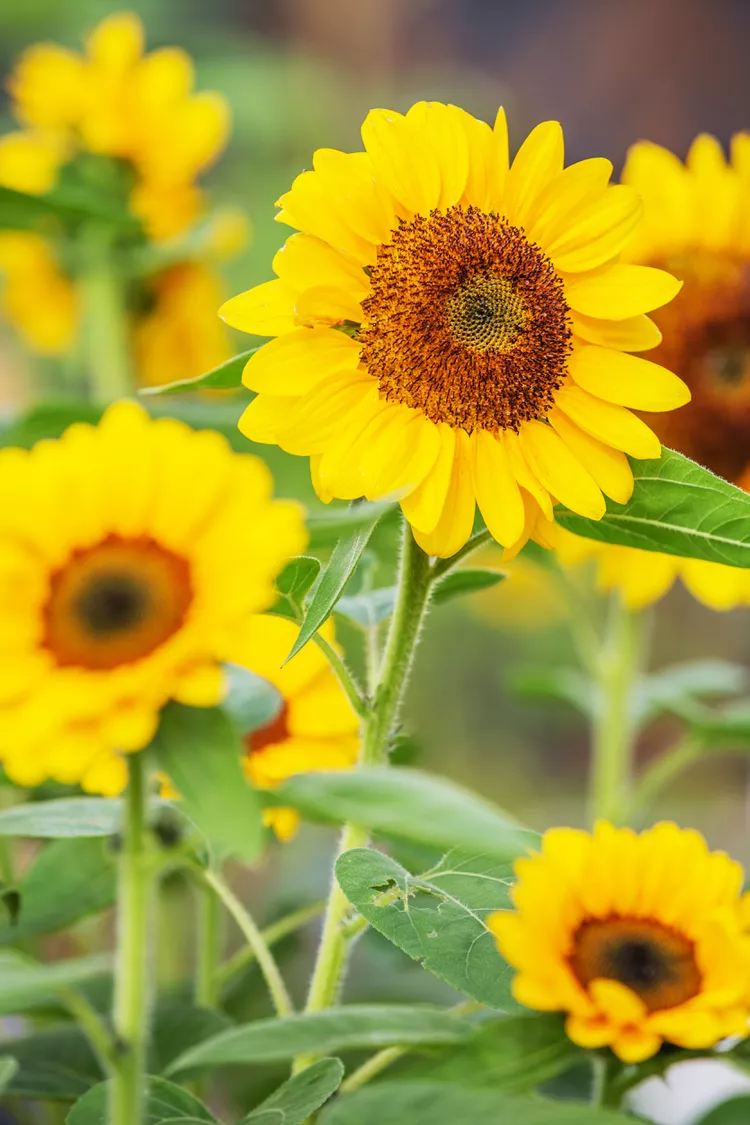10 Best Tomato Companion Plants to Grow

When planning out your vegetable garden, it's a good idea to carefully consider your tomato companion plants. You'll get a bigger harvest if you avoid placing related plants like peppers nearby. That’s because these plants are susceptible to the same pests and diseases. Instead, try out some of the tomato companion plants listed below. Pairing these herbs, flowers, and vegetables with your tomatoes can help you grow a larger harvest, combat pests naturally, and offer lots of other benefits too.
Basil
Tomatoes and basil pair beautifully together in dishes like margherita pizza and caprese salad. But these two plants don’t just make perfect partners in the kitchen. Growing basil with tomatoes is also a classic companion plant choice for your garden that offers benefits to both plants.
Basil’s strong scent can help repel common tomato pests, such as thrips. In turn, tomatoes’ large size and abundant leaves provide afternoon shade to basil plants, protecting their tender leaves from too much bright sun.
Borage
Borage is an often overlooked plant that is mostly kept as an ornamental, although its leaves and flowers are edible and taste a bit like cucumber. In the garden, borage is a wonderful pollinator plant and is sure to attract bees to help pollinate your tomatoes and boost your harvest.
What’s more, planting borage and tomatoes together appears to improve the growth of your tomatoes and boost their natural ability to resist disease. Borage also helps deter tomato hornworms, which can otherwise devastate your tomato plants.
Radishes
Flea beetles can be problematic pests, causing ragged holes in your tomato leaves and transmitting diseases like bacterial wilt. Interestingly, flea beetles absolutely love radishes, so sowing radish seeds next to your tomatoes can help keep your tomato plants pest-free.
Beyond providing natural pest control, interplanting radishes among your tomato plants is a smart way to maximize your garden space. While you’re waiting for your tomatoes to mature, you can succession plant radish seeds and gather in a crop or two of radishes before mid-summer.
Thyme
Like basil, thyme has a strong aroma that helps to keep pests away. Specifically, thyme can be used to repel tomato hornworms and whiteflies, and studies have found that it also reduces armyworm populations too.
Thyme is a low growing plant, making it an excellent natural mulch choice. Planting creeping thyme around your tomato plants can help suppress weeds and prevent soil from drying out too quickly. Just keep in mind that thyme is a perennial plant in most areas, and it will come back year after year. In contrast, tomatoes are annuals that only last one growing season.
Legumes
Beans, peas, and other legumes have the ability to fix nitrogen into the soil, naturally boosting soil fertility. Planting beans and peas near your tomato plants can give your tomatoes a nutrient boost and enhance their growth.
Additionally, cowpeas are one of the best trap crops to use if you struggle with green stink bugs in your garden. These pesky insects can cause stippling on tomato skins and other problems too. However, cowpeas will lure stink bugs away from your tomatoes.
Dill
Dill and other plants in the carrot family help attract beneficial insects to your garden. From ladybugs and lacewings to parasitic wasps, these helpful critters will keep pest populations in check. These predators feed on tomato hornworms, aphids, and several other common plant pests.
To get the most benefit out of your dill plants, allow them to bloom. Because dill’s flavor will change after flowering, you may want to succession plant your dill to ensure you have plenty of dill for you and beneficial insects too.
Crimson Clover
If you’ve ever weeded clover out of your garden, sowing clover seeds around tomato plants may seem counterintuitive. However, crimson clover offers a lot of benefits to tomato plants and it’s an annual that dies back in winter.
When planted in your garden beds, crimson clover acts as a living mulch, naturally suppressing weeds and protecting your soil from the elements. As a member of the legume family, it also enriches your soil by adding nitrogen. Finally, when it flowers, crimson clover is a hit with pollinators and beneficial insects that can keep pests in check and boost your tomato harvest.
Sunflowers
Sunflowers’ wide flower heads make them hard to resist for bees and other pollinators. Planting sunflowers near your tomato plants can boost pollination rates and help you to produce a larger harvest of juicy, ripe tomatoes.
Because sunflowers are so tall, you won’t need to worry about your tomatoes drowning them out or blocking their access to the sun. That said, if you have a smaller garden plot, or you’re growing your tomatoes in pots, there are also a lot of dwarf sunflower varieties that are suitable for small spaces.
Collard Greens
Collard greens and other members of the cabbage family are excellent trap crops. When planted near your tomatoes, these plants can lure pests like harlequin bugs away from your tomato plants.
Interplanting fast-growing collards with your tomatoes can also boost the productivity of your garden. While you’re waiting for your tomatoes to ripen, you can gather armloads of fresh leafy greens.
Sweet Alyssum
Sweet alyssum is commonly kept as an ornamental plant, prized for its low-growth habit and abundance of petite white and purple blooms. Those flowers are very popular among pollinators and beneficial insects, including parasitic wasps. Conveniently, parasitic wasps are one of the top predators of tomato hornworms.